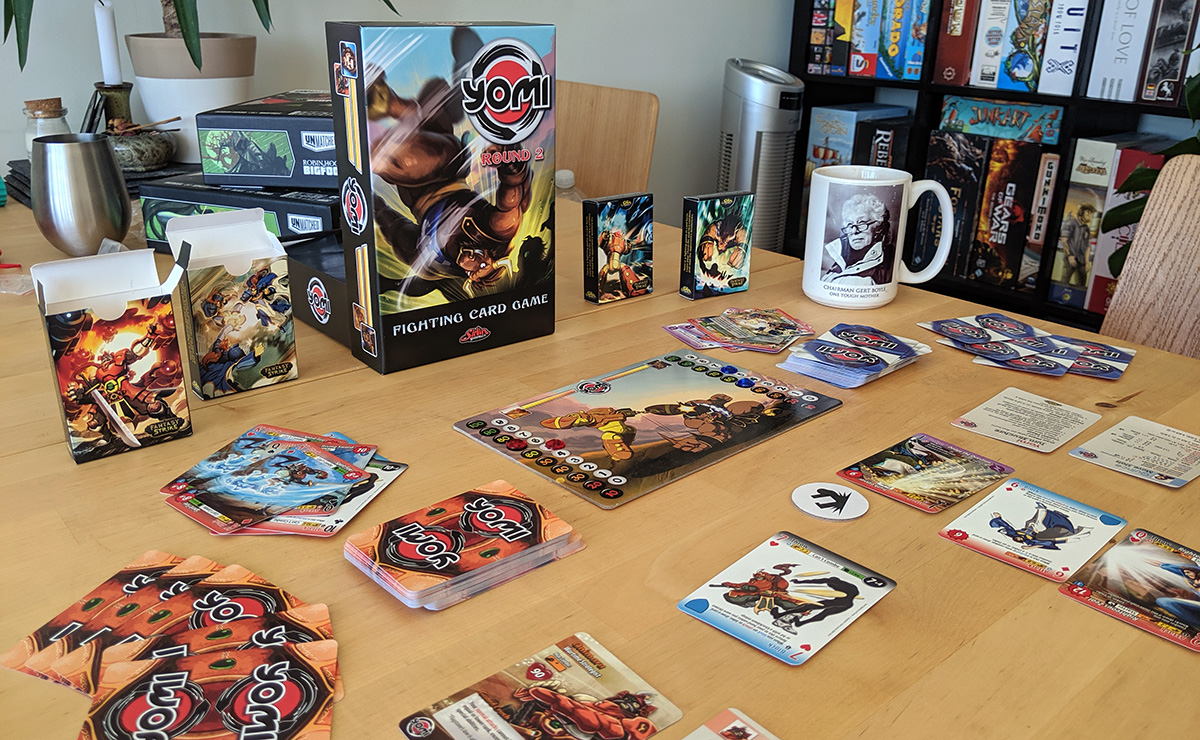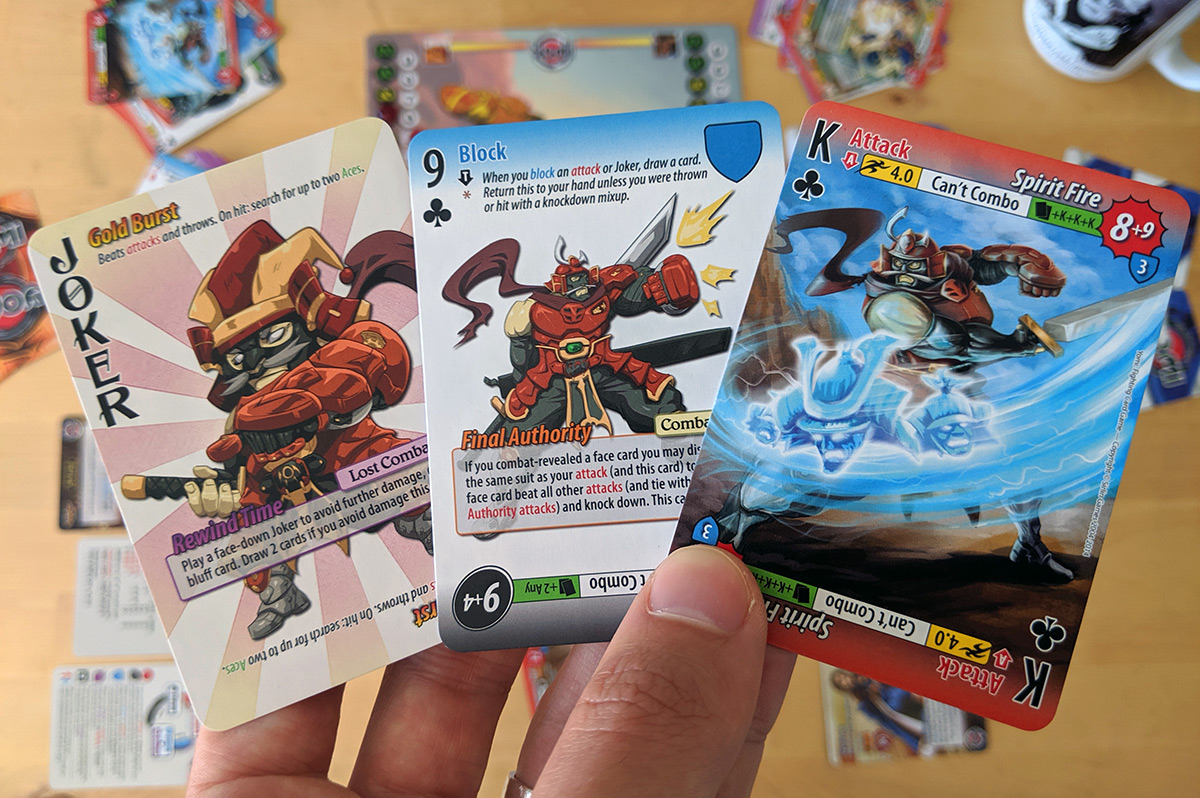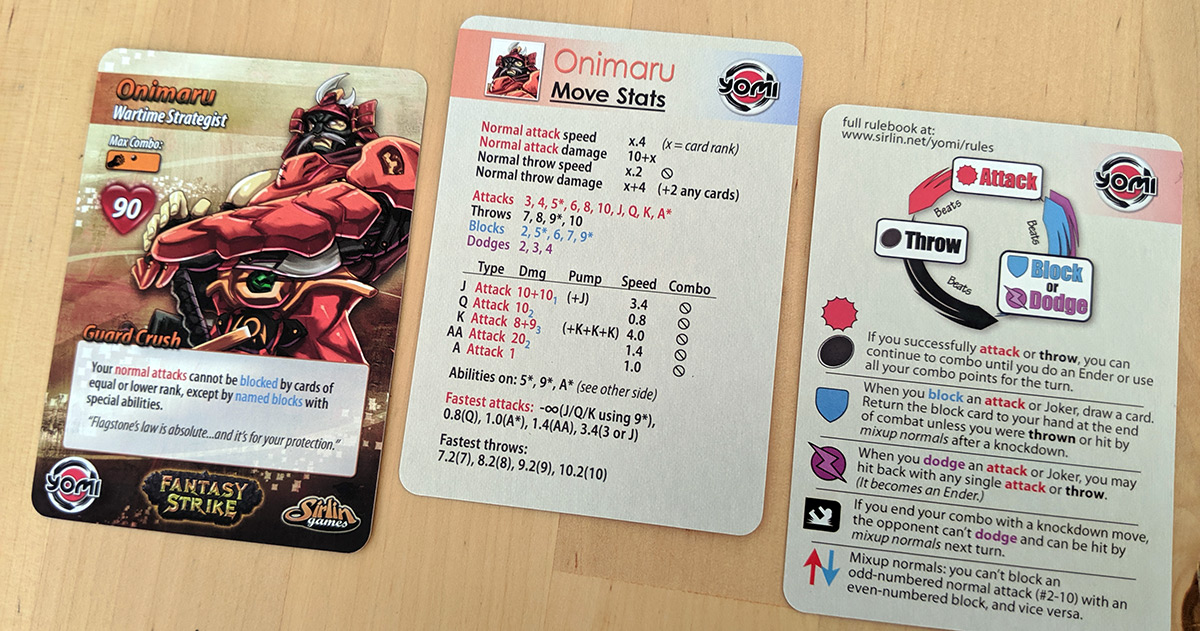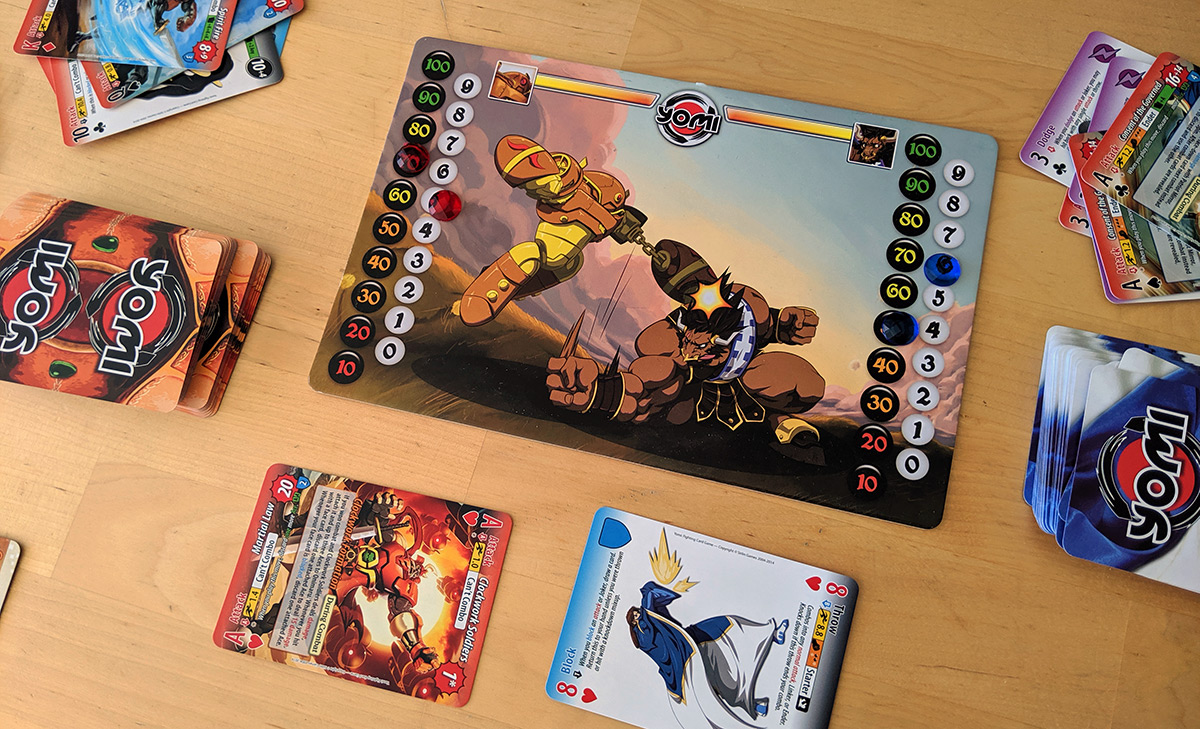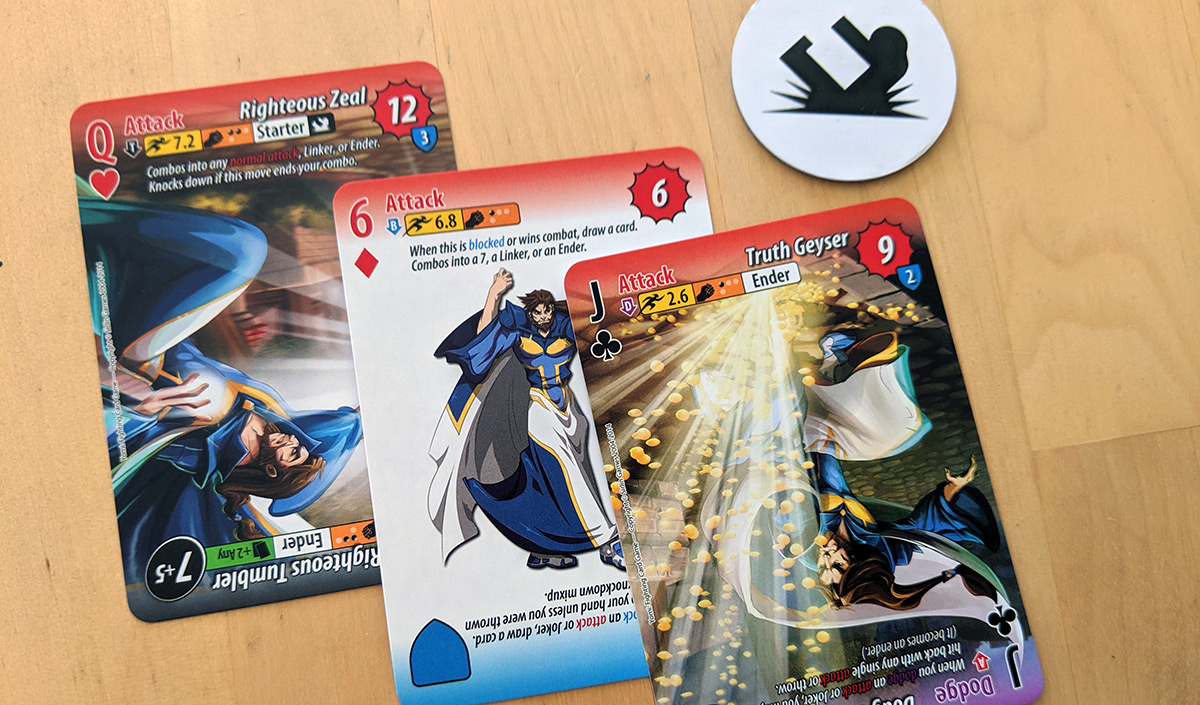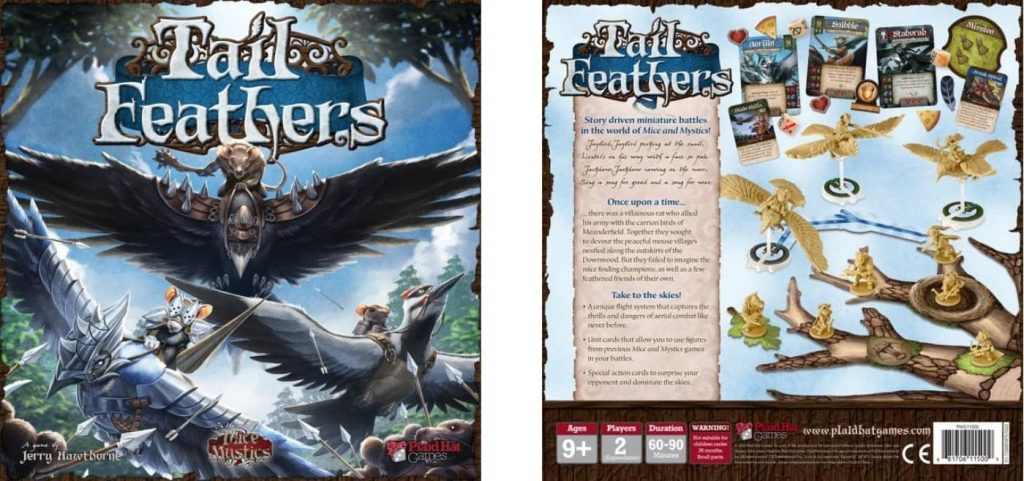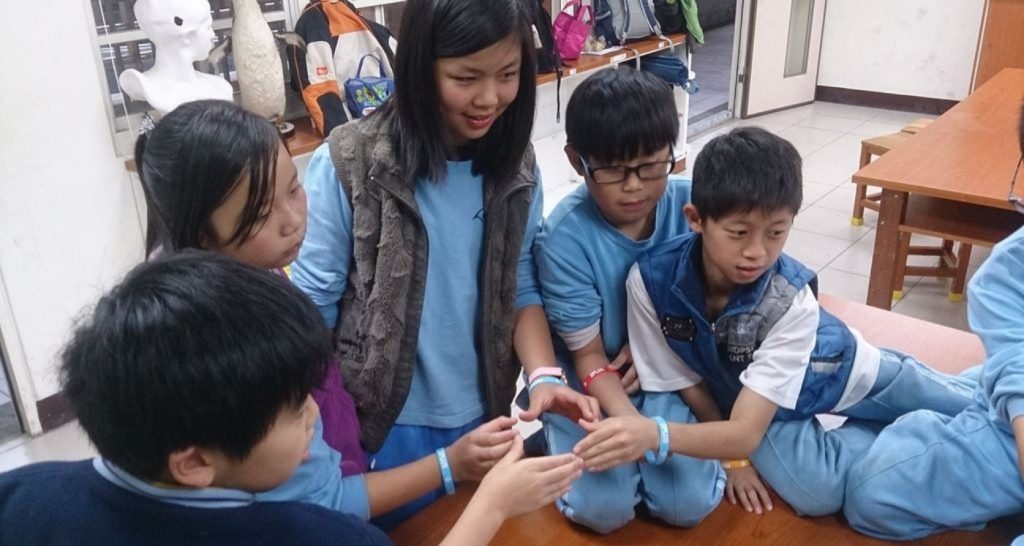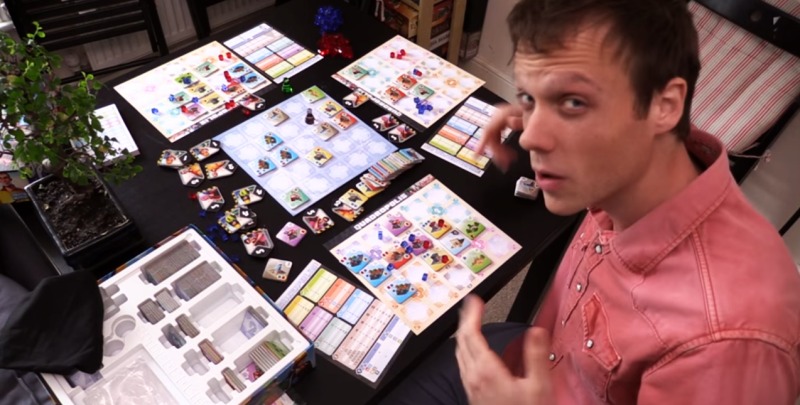Quinns: The people have spoken! After our glowing review of Combo Fighter on Friday, Shut Up & Sit Down was besieged by comments asking what we thought of Yomi, a well-liked 2011 game with a very similar foundation (as well as a teeming crowd of 20 playable characters).
We hadn’t played Yomi when we filmed the Combo Fighter review. Today, I can announce that we have played Yomi, and can provide some official SU&SD impressions!
So let’s start here: Holy kittens, Yomi is *bizarre*.
Like Combo Fighter, Yomi is a fighting game that sees players simultaneously selecting a card, revealing, and then one player wins the rock/paper/scissors battle. Like Combo Fighter, winning a round in Yomi then lets you play more cards from your hand in a bruising combo.
…But unlike Combo Fighter, which has strikingly clean cards and cardplay, Yomi has the busiest cards I have ever seen in a game. Cards so busy that they probably have three phones and a heart condition.
There are fifteen different features you might find on these cards, but also note that every card is double-ended, meaning that there can be upwards of 20 pieces of relevant info on a single card (as well as a picture of your character in one of three different art styles that is upside-down half the time). Fan out your starting hand of seven cards, and you’re potentially staring down the barrel of more than 100 pieces of information.
You can also see a “Joker” on the left up there. That’s because every fighter deck can also be used as an ordinary deck of playing cards! This is a design decision that it both amazingly awkward and semi-elegant. It’s awkwalegant!
However, where Yomi benefits from this deluge of data is in presenting players with an absolutely excellent hand management game.
Where in Combo Fighter players always draw back up to five cards, in Yomi you draw just one card a turn, but you can draw an extra card if you play an unambitious “Normal” attack or a successful block. In fact, block cards always return to your hand unless they’re countered with a throw.
What this means is that players who aggressively extend their combos are also thinning out their hand of cards (and available options) for future turns, while players who cautiously stockpile cards will have an easier time utilising Yomi’s rules to do with forming cards into poker-style pairs and straights. Since a game of Yomi takes three or four times as long as a round of Combo Fighter, this system gives player plenty of rope to hang themselves should they go in for the kill too early or too late, which is a lot of fun.
In 2010, beloved board game reviewer Tom Vasel said that Yomi was one of his favourite games to play, and after trying it myself I can’t say that I’m surprised. The peculiarities of each character and how to pilot them through this thought-provoking puzzle made me want to stick with a single character and hone my skills, but it was equally tempting to crack open a new deck and see what it was like, and that feeling of being spoilt for choice is a sure sign of quality.
I don’t think the array of teeny text on the cards has aged all that well, the horrible male gaze art definitely belongs in the past (my gosh, it’s even seedier than the video games it’s emulating), and it’s hard to teach Yomi’s array of unusual rules without sounding somewhat demented, but the game itself shines through all of this bad weather. It’s just a very strong design.
That said, it’s also crystal clear what Combo Fighter does better. It’s profoundly ironic, but Combo Fighter is actually a better example of “Yomi”, the intangible mind game of “predicting your opponent” that was coined by the designer of Yomi, David Sirlin.
In our video review we described Combo Fighter “as if Inception took place in an alley at 2am”; it’s a game where at least 5 of the 10 minutes that a round takes is spent inside of your opponent’s head. By contrast, in the actual game of Yomi both players are presented with a haystack of information and the complex hand management game that’s mostly hidden from your opponent, which means that while prediction is still part of the game, it’s harder for both players to derive satisfaction from the outcome. Did you actually out-think your opponent there? Or were they half-expecting to lose, instead choosing to play sub-optimal card so that they could keep building a straight? Where Combo Fighter creates a painful impact with each flip of a card, flipping two cards in Yomi creates a lot of reading and the question of whether the losing player wants to deploy a Joker for the Rewind Time feature.
But as I say, overall I was very pleasantly surprised by Yomi, and I certainly wasn’t expecting our review of Combo Fighter to lead me to another great game!
That said, despite some similarities Combo Fighter and Yomi are meant for two very different audiences. Combo Fighter is a light bit of fun that I could teach to anybody. I also think it best captures the spirit of fighting games, which is an endless cycle of “What’s happening,” “Oh my gosh that was awesome,” “Oh crap I’ve lost”. It’s a AAA game for reasons of art, attitude and accessibility, and it’s the box that I’ll be keeping in my collection.
By contrast, Yomi is for people who like their games to have serious staying power. It’s for competitive folks who want to get down and dirty in a rich lil’ system, and it better simulates the technical complexity of fighting games. Where in Combo Fighter you’ll have figured out what makes two characters special within five minutes, in Yomi learning the fundamentals of two characters might take two hours. If you want a 1v1 game that’ll keep you and your roommate or partner scratching your head for months, I think you could do a lot worse than Yomi.
If you’re interested, Yomi appears to still be available from Sirlin’s own site, where you can also download Yomi as a free print’n’play (which you could totally stick onto a normal deck of cards!). It’s also available digitally on Steam and iOS, in case you’ve always wanted a fighting video game, in card game form, in video game form.
Now if you don’t mind, I’m heading off to sit in my office with the curtains drawn and my hands over my ears, so that I can ignore the small group of people telling me to try Exceed instead.
Bye!

